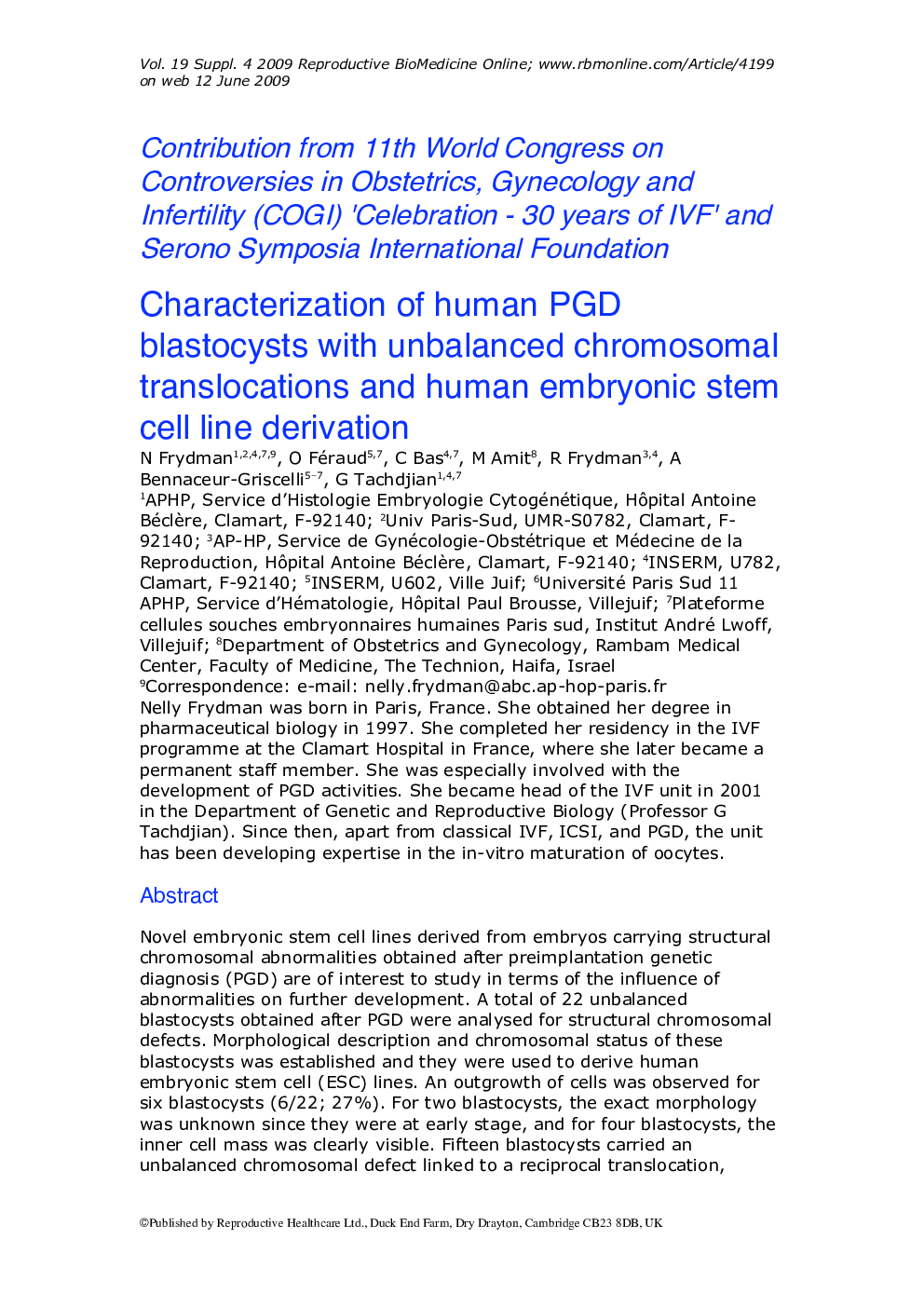| Article ID | Journal | Published Year | Pages | File Type |
|---|---|---|---|---|
| 3972222 | Reproductive BioMedicine Online | 2009 | 14 Pages |
Novel embryonic stem cell lines derived from embryos carrying structural chromosomal abnormalities obtained after preimplantation genetic diagnosis (PGD) are of interest to study in terms of the influence of abnormalities on further development. A total of 22 unbalanced blastocysts obtained after PGD were analysed for structural chromosomal defects. Morphological description and chromosomal status of these blastocysts was established and they were used to derive human embryonic stem cell (ESC) lines. An outgrowth of cells was observed for six blastocysts (6/22; 27%). For two blastocysts, the exact morphology was unknown since they were at early stage, and for four blastocysts, the inner cell mass was clearly visible. Fifteen blastocysts carried an unbalanced chromosomal defect linked to a reciprocal translocation, resulting in a positive outgrowth of cells for five blastocysts. One human ESC line was obtained from a blastocyst carrying a partial chromosome-21 monosomy and a partial chromosome-1 trisomy. Six blastocysts carried an unbalanced chromosomal defect linked to a Robertsonian translocation, and one showed a positive outgrowth of cells. One blastocyst carried an unbalanced chromosomal defect linked to an insertion and no outgrowth was observed. The efficiency of deriving human ESC lines with constitutional chromosomal disorders was low and probably depends on the initial morphological aspect of the blastocysts and/or the type of the chromosomal disorders.
